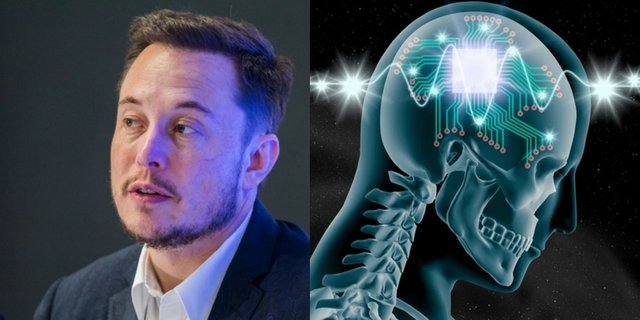Elon Musk-Linked Scientists Are Developing Brain Probes for DARPA

Last month, a team of scientists affiliated with Elon Musk's Neuralink project, published a paper identifying a new technique for inserting probes into brains. The study was published in a journal called BioRxiv, and according to Bloomberg, all five of its authors have been associated with Nueralink.
It was noted at the end of the study that the research was funded through a DARPA Contract.The team is developing this technique so they can build technology that is capable of monitoring brain activity.
The study is called "The “sewing machine” for minimally invasive neural recording," since the technique works sort of like a sewing machine."Here, we demonstrate the feasibility and scalability of this approach with a system incorporating fine and flexible thin-film polymer probes, a fine and stiff insertion needle, and a robotic insertion machine. Together the system permits rapid and precise implantation of probes, each individually targeted to avoid observable vasculature and to attain diverse anatomical targets," the study says.
In the study, researchers implanted arrays of electrodes in the brains of rats and recorded their responses.
The researchers concluded that "We have repeatedly and reliably implanted our thin, flexible electrodes in both agarose tissue proxy and the brains of rats."
Another alarming detail about the study is the idea that the procedure was carried out by a robot.
"Because the whole insertion process is automated and the robot can move quickly, per-thread insertion times were quite short. Indeed, other than the needle insertion, which is performed at 0.1-2 mm/s, robot movements are rapid, up to 100 mm/s. This allows for the per-thread insertion cycle times of less than 9 seconds. Such rapid insertion allows for large numbers of electrodes to be inserted in a practical surgical timeframe," the study indicated.
It also seems that this technology is very far away from entering the market for humans.
The researchers noted that the procedure caused injuries in the lab rats and did not seem durable for long term use.
However, the team said that they are working to perfect the process and will hopefully be able to minimize these dangers over time.
"Another significant consequence of sewing on the tissue condition was the presence of large penetrating lesions that were clearly associated with the insertion process. It is also likely that the inserter needle can inflict a more significant injury by accidentally stabbing a larger blood vessel such as a penetrating arteriole on its way. Overcoming these technical problems and improvements to the surgical techniques are underway," the study said.
The Neuralink headquarters is in San Francisco's Mission District, where it shares an office building with OpenAI, another company co-founded by Musk.
However, very little is known about the company aside from a few vague long term plans revealed by Musk during interviews.Musk said that they are working on a neural lace that will act as a "digital layer above the cortex," which he hopes will achieve a "symbiosis with artificial intelligence."
Photo: Teslarati.com
To listen to the audio version of this article click on the play image.

Brought to you by @tts. If you find it useful please consider upvoting this reply.
sounds great, should be good for paralized people someday. Seems like it is obsolete since they can send and receive all sorts of signals through the brain without the need of surgical implants.
Curated for #informationwar (by @wakeupnd)
Ways you can help the @informationwar!
Like Tesla, none of this technology will be open source, we have to wait for someone to reverse engineer it to really know how it works.